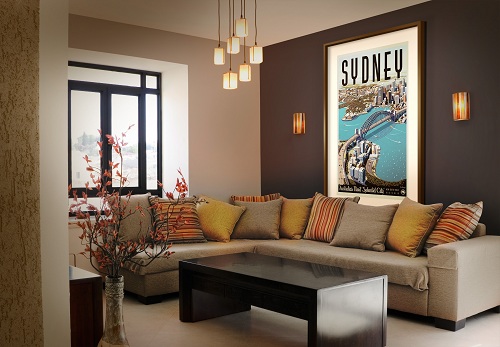With technology at our fingertips and almost having too much choice in every avenue of our lives, searching for ideas and concepts is always at the forefront of our minds. Interior design has become particular popular over the past few years, with coffee table books giving us inspiration left right and centre with the latest trends in decor becoming as fashionable as our clothing.
Holding a Masters in Fine Art and boasting 20 years of industry experience, Couturing interviewed Roger Saddington on the launch of his new website, his passion for art and why he started Printism, a curated collection of “Real Art in Print” available online for consumers to purchase.
Congratulations on the launch of Printism. Can you tell us more about your inspiration behind the concept?
Since 2003, our art consultancy business has worked for clients to create collections of premium art prints. These images, designed to be the best print material available, have been used on the private walls of companies and residences throughout Australia for over 10 years. At a certain point, I realised that consumers with an interest in interior design might like to access this ‘private vault’ of high quality art, and Printism was born.
Who or what are you inspired by on a day to day basis and why?
For me it’s all about the artists and the art. There are many extraordinary artists in this world, but only limited space at the top levels of the gallery art scene. Consequently, many amazing artists keep going for years without any formal recognition of the incredible work they are doing. They do it for the love of pure creativity. To me that’s inspiring. We are trying to find these ‘great unknowns’ and make people aware of their work.
How do you curate the prints and artists for the site?
Most of the work has come out of our long-standing consultancy practice and was created with a particular end-use in mind. When you’re curating work for a specific group, such as a hospital community or a corporate entity with a strong culture, you have to find ways to communicate through the art. Wherever possible, we choose work that has a conceptual or practical basis; a clear reason why it was made. Whether the artist’s intention is to capture the spirit of the landscape or the intricate detail of a something exquisite, people can use the art to make their own ‘statements’ and communicate their view of the world to friends and family at home.
Do you think online gallery offerings are the “way forward” for art?
There will always be place for physical galleries, particularly with expensive original art. When you are looking to spend a substantial sum on an original piece, you need to see the actual item. Where online galleries come into their own is with the purchase of affordable art, particularly print material. Even so, there are some serious quality issues to navigate. The big players in the internet art print space are all essentially ‘aggregators’, remotely displaying content from producers around the world. We’ve focused so strongly on the credibility and quality of our portfolio. It’s about building trust.
Interior design has become extremely popular over the past few years, do you have any tips for selecting the perfect art for your home?
Our collection was originally assembled as a tool for interior designers to help solve common design problems. For example, with the ever increasing use of plasterboard in recent years, we realised that designers were increasing finding a need to ‘soften’ or ‘humanise’ the resulting spaces. Aspiring home-based designers can use the collection in exactly the same way.
Why do you think customisation and personalisation has become so important to people?
Technology has enabled it. We are all on our smartphones or tablets every day now – using them for search, news, entertainment, productivity and more. In the past, when you had to buy an existing painting or print from a physical gallery wall, people understood that limitation. In our case, we now offer the opportunity to choose not only the subject, but the size and form of the work. People will gradually come to expect this ability to customise, as they have in other areas where technology has changed the game.
Images from Printism.com


